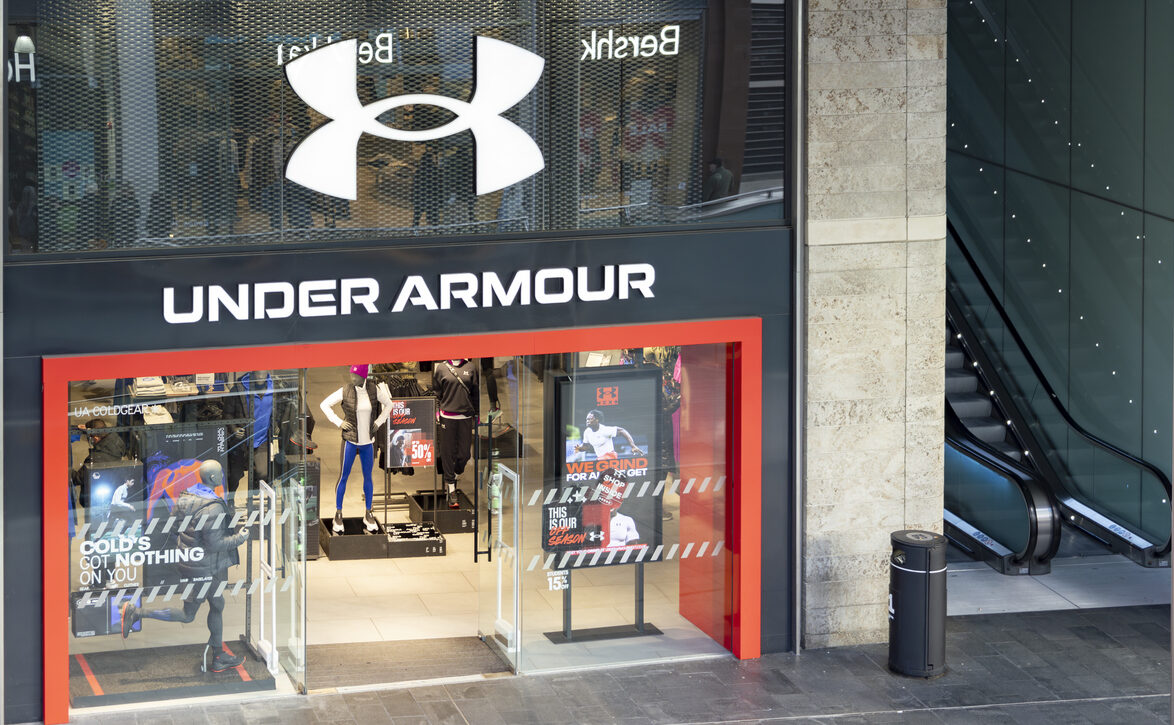
iStock.com/Ray Orton
Under Armour Looks To Do More With Less
In his first quarterly earnings call since returning to the CEO role after four years, Under Armour founder Kevin Plank outlined a new Protect This House strategy, which includes streamlining product offerings, simplifying go-to-market processes, substantially reducing discounting, and making bigger statements around launches.
The strategy focuses on three areas: amplifying product demand and loyalty, optimizing and modernizing operations, and elevating consumer experiences.
Amplifying Product Demand and Loyalty
Under Armour plans to reduce its SKU count by approximately 25% over the next 18 months with a focus on “better and best offerings” to drive balance across segmentation while decreasing “good” products that often get discounted. Plank said, “We’ll make sure that if a product is important enough for us to make and release, it’s also important enough to celebrate with storytelling or plainly, we just won’t make it.”
To be more responsive, a go-to-market turnaround from idea to selling floor of six to 12 months will be pursued versus the current 18-month process.
In marketing, product descriptions and hang tags will be overhauled as part of a broader effort to highlight the product performance attributes. Plank noted that in North America, the brand “competes primarily on price” rather than innovation. He said, “We’ve done a poor job consistently communicating our product advantages to athletes. This must be fixed as it’s hard to sell something that is a best-kept secret.”
Under Armour’s global and North American marketing teams have also been consolidated to “bring a cleaner, more creative integrated approach for faster decision-making and improved oversight.” The hiring of a new chief marketing officer is underway. Plank said, “Over the past four-plus years, the company has become overly siloed and bureaucratic with competing internal agendas. We now have just one agenda.”
Optimizing and Modernizing Operations
Under Armour will seek to simplify its operating model in part by reducing the number of outside agencies and consultants it works with, the number of reports generated across the company, and unnecessary meetings. Plank said, “There are too many products, too many initiatives, too much of too much.”
A new category portfolio structure is expected to better align product, marketing, and sales organizations for developing go-to-market approaches and offer “greater visibility in the category and product performance, which is critical to developing greater agility and adaptation,” according to Plank. Further efforts to modernize its supply chain and planning processes and optimize its cost base, including layoffs, is expected to free up funds to support growth initiatives.
Elevating Consumer Experiences
Under Armour will look to support its investments in better products and storytelling “through deliberate merchandising strategies and thoughtful distribution choices, particularly here in North America,” according to Plank.
Online, the brand’s e-commerce business “has been overly dependent on promotions.” The goal is to have more than 50% fewer site-wide promotional days online this fiscal year to build a “significantly more premium platform over the next 18 months.”
At owned retail, the brand sees opportunities to elevate curation and storytelling at its full-price stores to create more of a “premium showcase” as well as to simplify merchandising at outlet stores that are “over-sorted across categories and have too many different floor sets,” said Plank.
With wholesale partners, Under Armour will look to rebuild relationships by elevating product offerings from “mostly good and distorting toward better and best level products,” as well as through joint marketing efforts. Plank stated, “We haven’t been as consistent in giving athletes or retail customers a reason to buy our brand as robustly as possible.”
For the fiscal year ending March 2025, revenues are expected to be down at a low double-digit percentage rate. Revenues in North America, its largest market, are expected to decline between 15% and 17% due to conservative ordering by wholesale partners, proactive steps to reduce discounts for the brand in the marketplace, and generally lackluster demand for the Under Armour brand.
In the Q&A session of the call, Plank expressed confidence that while the majority of Under Armour’s struggles are “pretty much self-inflicted,” they’re fixable. He said, “At the simplest level, we find ourselves for the most part, when we show up at retail, we’re trading on price with more than should be good level product. That’s just not representative of the opportunity that this brand has. And we’re not falling on a sword saying we just have to be premium.”
Discussion Questions
What do you think of Kevin Plank’s plan to bring brand heat back to Under Armour?
What are the obvious and less obvious causes of Under Armour’s long struggle to revive growth?
